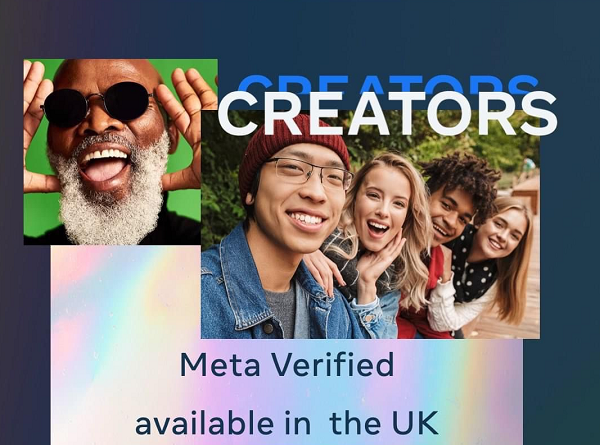Despite implementing some changes to its original plan for Meta Verified, its subscription program that enables users to purchase a blue checkmark on Facebook and Instagram, Meta is expanding availability of the scheme to the UK, with UK users able to apply from this week.

Meta launched the initial stage of Meta Verified with users in Australia and New Zealand users back in February, before expanding it to US users a month later. And now, it’s the UK’s turn to start buying blue ticks – though as noted, there has been one significant change to the offering since its initial release.
When Meta expanded the program to the US, it pulled its increased reach element for Meta Verified profiles, which would have given subscribers more exposure potential within both apps.
Twitter has implemented similar for Twitter Blue subscribers, giving them higher ranking in reply threads and discovery. But after trying it out with AUS and NZ subscribers, Meta quickly backed away from this, in order to ‘reassess the best way forward’ for this aspect.
Meta hasn’t provided any insight as to why it’s opted to withhold this element, but it could be that it conflicts with its ad offerings, with users also able to pay for post boosting, which is essentially the same thing, just on a per post basis.
Maybe, then, the relative value of additional reach for subscribers dilutes the same for ads – or maybe Meta just realized that by amplifying the content of paying subscribers, you’re increasingly likely to be giving more reach to attention-seekers who would likely have got that reach organically if their content was actually any good.
That’s what’s happening on Twitter, with blue checkmark accounts tending to be the worst tweeters, who can now pay to force more people to see their rubbish takes. I’ll give you the lowdown – it’s not a lack of reach that’s stopped these accounts from getting more engagement, it’s the quality of their comments that’s impeding their own success.
Yes, in most cases, the individual users are the problem, not the algorithm, as they might want to hope.
As such, juicing their reach is probably counter-intuitive, in terms of engagement – but again, Meta hasn’t explained why it’s pulled this element, so we don’t know why at this stage.
In any event, you don’t get any reach boost for your monthly fee for Meta Verified, but you do get the other benefits.

The direct account support option has already proven beneficial for some, with users signing on to Meta Verified in order to rectify long-standing issues, then letting their subscription lapse a month later.
Which may be worth it, depending on your problem – and it could also be worth also paying for a blue tick, even though selling the marker dilutes its value, and it’s pretty much meaningless now on Twitter, after the removal of legacy checkmarks.
Now that anyone can buy one, it no longer represents a higher level of trust or credibility, so its value is declining over time. Which is ironic, given that it’s now making more money than ever for Meta and Twitter respectively – but still, only a small percentage of Twitter users are paying, and you can bet that only a fraction of Meta users will also sign up to the program.
Because most people don’t post updates to social apps anymore. Most users now share content with their friends and family in private message groups, but original posting has been in steady decline in recent years.
As such, why would these people pay for a blue tick, or extra reach (on Twitter)? Which, again, leads to some of the most attention-hungry users paying for more presence, which is probably not good for overall engagement.
But like Twitter, Meta needs the money, and it’ll be a handy supplemental income stream, despite being a very minor one in comparison to ads. A percentage of their users will always pay, and that’ll bring in some additional revenue – and if the checkmark system is already being corrupted by Twitter, Meta, I guess, may as well profit from the same.
Meta Verified will be available to UK users for £12 per month via iOS or Android, or £9.50 per month direct from Meta on the web (which side-steps app store fees). If you’re interested, you can find out more info here.



